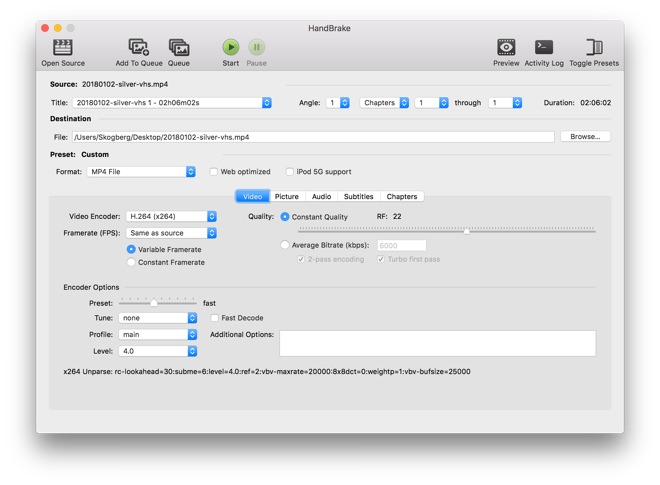

Open up HandBrake and load your file you want to convert by clicking on “Open Source.” Find the file you want to convert and select “Open.”

I’m going to convert that to a 1080p H265 video file that is substantially smaller in size. I used MakeMKV to pull the video off the BluRay disc, resulting in a 31.7GB file. I’m making a backup copy of the video to store on my file server.
#Handbrake video compression tutorial how to#
The video I’m using to illustrate how to use GPU encoding is a Blu-Ray rip of Pan’s Labyrinth. My GPU (GeForce GTX 1060) and my driver version: 440.100. My CPU is an AMD Ry6-Core, 12-Thread processor. I’m using a GTX 1060 and have Driver version 440.100 installed. Also, to use Nvenc encoding, you’ll need the Nvidia Graphics Driver 418.81 or later and an Nvidia GeForce GTX 1050+ series GPU or better per HandBrake’s documentation. How to Use NVENC GPU Encodingįirst, make sure you have the latest version of Handbrake installed (as of that is version 1.3.3). Version of HandBrake available from the PPA that has NVENC/GPU encoding capabilities. HandBrake 1.3.1 is the current option in the Ubuntu 20.04 repositories. In this post, I’ll show how to use this feature in Handbrake and show some comparisons to illustrate the benefits and tradeoffs that result. Regardless, this option offers dramatic speed improvements, particularly when working with 4K videos. I don’t know exactly when HandBrake added the capability of using the GPU for encoding, but it was somewhere between 1.3.1 (current version in the Ubuntu repositories) and 1.3.3 ( current version on PPA).


 0 kommentar(er)
0 kommentar(er)
